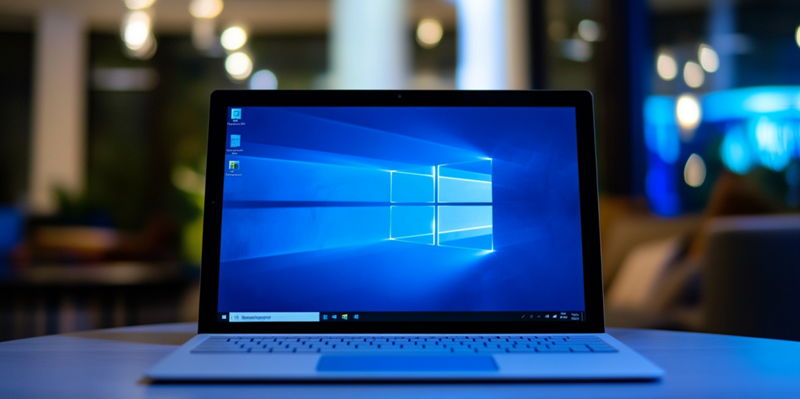As Microsoft sets October 14, 2025, as the deadline for ending free update support for Windows 10, users face the need to plan ahead or risk significant security vulnerabilities. This impending event marks the culmination of a decade-long support period for an operating system that has garnered widespread popularity since its inception. Even as we approach this significant milestone, Windows 10 remains the dominant operating system, boasting a substantial 62.79% market share among Windows installations as of 2024. Users are now confronted with the decision to upgrade to Windows 11, invest in extended support, or explore alternative operating systems like Linux. The end of support for Windows 10 will have far-reaching implications, not just for individual consumers but for businesses and organizations that rely heavily on the platform.
The Popularity and Entrenchment of Windows 10
Windows 10 emerged as a critical response to the shortcomings of its predecessors, Windows 8 and 8.1, which failed to garner widespread approval. Recognizing the need to regain user trust, Microsoft developed Windows 10 with significant improvements and user-centric features. These efforts quickly paid off as Windows 10 rapidly amassed a loyal user base, becoming the company’s flagship OS. Its popularity is largely due to its stability, familiarity, and the broad array of features tailored to meet the diverse needs of its users. However, this entrenchment presents challenges as Microsoft attempts to transition users to Windows 11, a process that has not been as seamless as anticipated.
With Windows 11, Microsoft introduced stricter hardware requirements, including the need for newer CPUs and TPM security chips. These prerequisites pose a significant barrier for many users whose existing hardware does not meet the new standards. Consequently, the adoption rate for Windows 11 has lagged disappointingly. As of now, Windows 11 holds only a 33.37% share among Windows installations, a stark contrast to Windows 10’s dominance. Microsoft’s assumption that the natural hardware replacement cycle would drive Windows 11 adoption has not materialized as planned. Instead, a substantial number of users have remained with Windows 10, drawn by its reliability and familiar interface.
The Challenges Microsoft Faces in Transitioning Users
As we edge closer to the end of support for Windows 10, Microsoft must navigate several challenges to facilitate a smooth transition for users. One of the primary concerns is the impending discontinuation of third-party support for Windows 10. Essential applications such as Google Chrome are likely to cease updates, and obtaining drivers for new hardware will become increasingly difficult. This lack of support raises significant concerns about the usability and security of the OS post-2025. Users who choose to remain on Windows 10 will face growing obstacles in maintaining an efficient and secure computing environment.
To mitigate these issues, Microsoft is offering the option of extended support, though it comes at a considerable cost. Extended support will be available similar to enterprise offerings, starting at $61 for the first year per machine, with escalating costs in subsequent years. This could represent a financial burden for individual users and small businesses that rely on multiple machines. Therefore, many users are compelled to weigh the costs of investing in extended support against the potential benefits of upgrading to new hardware compatible with Windows 11 or exploring alternative solutions like Linux.
Potential Security Risks Post-End-of-Support
An underlying concern that Microsoft must address is the potential security vulnerabilities that could arise from a vast number of Windows 10 machines post-end-of-support. The situation draws parallels to Microsoft’s earlier struggles with phasing out Windows XP, where continued use of the unsupported OS led to significant security breaches. A similar fate could await Windows 10 machines if users remain complacent about updating their systems. With cyber threats evolving in complexity and frequency, the importance of maintaining up-to-date security measures cannot be overstated. Microsoft must actively communicate these risks to users to encourage timely upgrades or transitions to alternative platforms.
Additionally, the broader tech ecosystem will be affected by Windows 10’s end-of-support. Software developers and hardware manufacturers will gradually shift their focus to newer operating systems, leaving Windows 10 users isolated. This shift will exacerbate the technical challenges of running outdated systems, further compromising security and efficiency. Users will need to act decisively in the face of these looming challenges, whether by upgrading to Windows 11, investing in extended support, or exploring other operating systems to ensure their digital safety and reliability.
Conclusion
As support for Windows 10 winds down, Microsoft faces several challenges in ensuring a smooth transition for users. A major concern is the upcoming end of third-party support, with essential applications like Google Chrome ceasing updates. Finding drivers for new hardware will also become tough, raising significant security and usability issues for the OS after 2025. Users who stick with Windows 10 will encounter increasing difficulties in keeping their computing environment secure and efficient.
To address these issues, Microsoft is offering extended support at a high cost. Similar to enterprise-level offerings, extended support starts at $61 per machine for the first year, with rising costs in subsequent years. This can be a financial strain for individual users and small businesses with multiple machines. As a result, users are evaluating whether investing in extended support is worthwhile compared to upgrading to Windows 11-compatible hardware or exploring alternatives like Linux. The decision involves weighing the costs and benefits of staying with an outdated system versus moving to newer, supported options.

